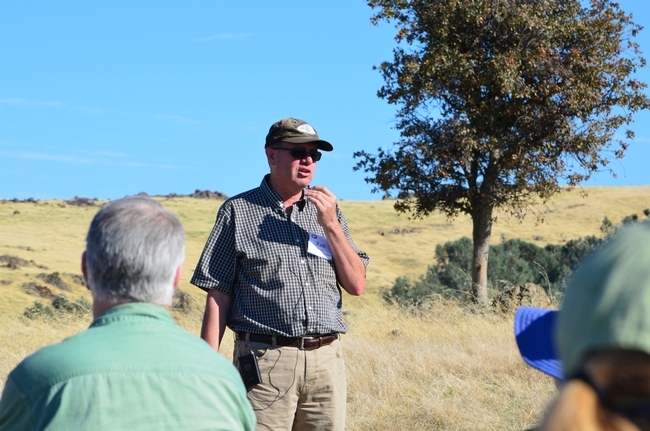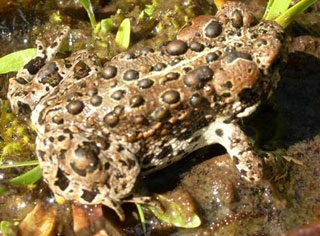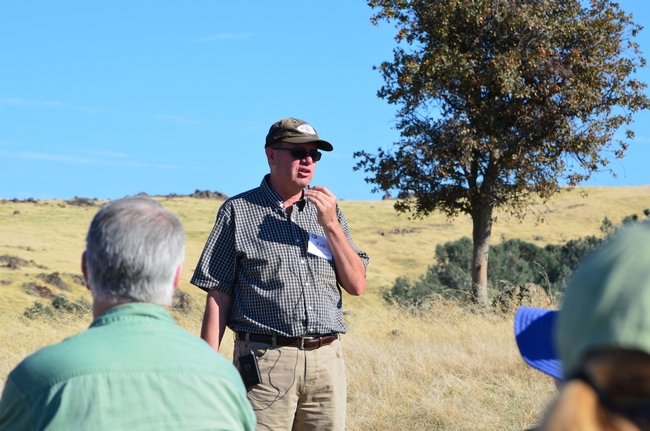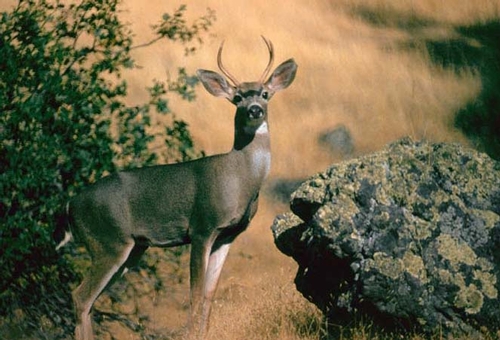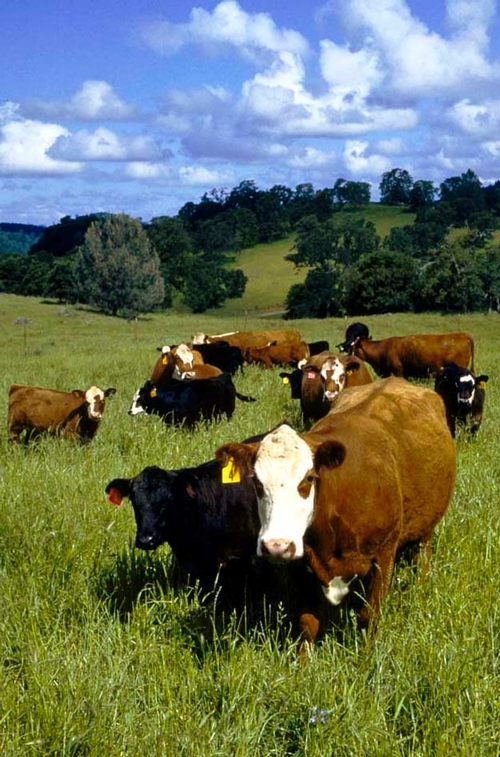Posts Tagged: Ken Tate
Desert ranchers struggle to endure drought
Even in northern Nevada, a desert where it rarely rains, the drought is troubling ranchers. They rely on water from the Sierra Nevada snowpack to grow grass and alfalfa for their cattle. This year, the snowpack is barely 20 percent of average, reported National Public Radio.
This presents a financial dilemma for almost every rancher in Nevada, California and Oregon as one of the worst droughts in a century maintains its grip on the West.
For the story, reporter Kirk Siegler spoke to Ken Tate, UC Cooperative Extension specialist in the Department of Plant Sciences at UC Davis.
He said much of Nevada is going into its third year of severe drought, a situation that's unprecedented even for an arid region accustomed to dry spells.
Tate and his colleagues are helping ranchers squeeze out as much irrigation efficiency as possible, and manage rangelands so the vegetation is more drought-tolerant. But there's only so much that can be done.
"There are not scientific answers to some of these problems. Sometimes there's no solution for not enough rain," Tate said.
Yosemite toad and cattle use the Sierra Nevada landscape differently
A five-year study of Yosemite toad populations in an area fenced off from cattle has shown that exclusion from grazing doesn't help the endangered amphibian, reported Kate Campbell in AgAlert.
"The toads use water areas and the cattle use drier meadow areas, which provide better forage," said Ken Tate, UC Cooperative Extension specialist in the Department of Plant Sciences at UC Davis.
The study, "Determining the Effects of Cattle Grazing Treatments on Yosemite Toads in Montane Meadows," found "no benefit of fencing to Yosemite toad populations." Researchers said their results "do not support previous studies that found a negative impact of grazing on amphibian populations."
The Yosemite toad was once among the most prevalent amphibians in the high Sierra including Yosemite National Park, where it was first discovered and after which it is named, according to a UC Davis news release. But its population and habitat has declined sharply since the early 1980s, disappearing from much of its historic range — meadows at elevations between 6,500 and 11,500 feet from Alpine to Fresno counties.
Besides grazing, other possible reasons for the amphibian's decline include habitat modifications, disease, invasive species, climate change and pesticides, the AgAlert article said.
Combined with other recent studies of water quality and meadow vegetation grazed areas, the research shows that conditions are improving and compatibility between livestock production and other ecosystem services provided by forests are increasing, Tate said.
More information about the studies can be found on the Rangeland Watershed Laboratory website.
Ranchers view UCCE test plots during spring range tour
UC Cooperative Extension range research was featured at a field day Saturday in Tehama County, reported Julie Johnson in the Corning Observer.
Josh Davy, UCCE advisor in Tehama County, reviewed test plots were 60 varieties of annual and perennial range grasses were growing. Ken Tate, UCCE specialist, and Leslie Roche, postdoctoral researcher, both in the Department of Plant Sciences at UC Davis, gave an update on their long-term grazing research projects evaluating the effects of multiple grazing treatments. Guy Kyser, UCCE specialist in the Department of Plant Sciences at UC Davis, talked about weeds.
Tony Turri, owner of the ranch that hosted the field day, said he has worked extensively with the UC Cooperative Extension.
"There are a lot of factors and organizations that are trying to harm the cattle industry," he said. "Events such as this are important in our ability to stay in cooperation with each other and provided education and information to keep us in business."
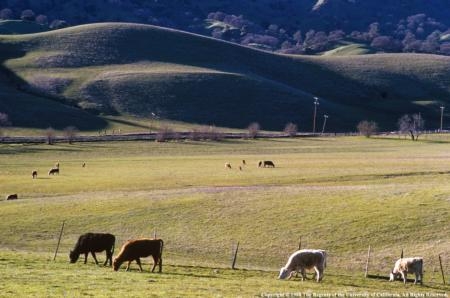
Medusahead, barb goatgrass and yellow starthistle were some of the weeds researchers discussed at the field day.
Diverse groups work together to enhance ecosystem services
Ecosystem services is a new term I've been hearing. Naturally I wondered, what are these services and is the ecosystem serving me? Ecosystem services are benefits we receive from the environment, such as clean water, open space, beautiful scenery, food production, wildlife habitat and diversity of plants and animals.
Not surprisingly, ecosystem services appeal to a broad audience. However, in the past, many people advocated for a single favored service and would fight with those who were partial to a different service. Now there is a strong trend toward partnerships.
“There’s been sea change on the topic of livestock management and rangeland ecosystem services,” said Ken Tate, UC Cooperative Extension watershed specialist based at UC Davis.
In a scenario 20 years ago, many ranchers would have focused solely on livestock production and ranch profit, while some environmental groups would have voiced concerns solely about wildlife habitat, and a government regulatory agency may have considered water quality the most important service. All parties have begun to recognize the connections among these important services and the need to work together to enhance all of them.
“If a ranch is not economically viable, then there is risk that land could become a shopping mall or some other development,” Tate explained. “A working ranch provides more ecosystem services than developments such as malls or suburban sprawl.”
A UC study published in the current issue of California Agriculture journal found that rangeland owners valued their land for its natural amenities as well as a financial investment.
Recently more than 120 people representing new and long-time ranchers, conservation groups, federal and state natural resources agencies, UC scientists and others gathered for the “Managing Rangeland for Ecosystem Services Workshop and Field Day” to discuss their common goals.
“Interest in this event reflects the growing interest in ecosystem services in a growing number of people,” said Tate, who organized the Oct. 18 event at UC’s Sierra Foothill Research and Extension Center, located 60 miles northeast of Sacramento. “Some people drove four or five hours to attend.”
At the workshop, Tate introduced the Prescribed Grazing for Ecosystem Service Project.
Despite their different backgrounds and ecosystem service priorities, there was no adversarial discussion among the attendees, observed participant Morgan Doran, UC Cooperative Extension livestock & natural resources advisor for Solano County.
“Everyone seemed to be in agreement that livestock are a useful tool in sustaining a healthy rangeland ecosystem,” Doran said. “And all seemed to acknowledge a need to better understand the balance of provisioning goods and services from rangeland systems.”
“We used to talk about one service at a time,” Tate said. “Now we talk about tradeoffs and synergies involved in managing for many services simultaneously. Optimizing water quality might take away from profitability. Talking about tradeoffs used to be confrontational. Now if we can understand the costs of these tradeoffs, there may be an individual or organization willing to pay for that difference. Basically, purchasing ecosystem services.”
Tate credits the workshop cosponsor California Rangeland Conservation Coalition for fostering the collaborative attitude. UC is among the more than 100 agricultural organizations, environmental interest groups, and state and federal agencies that have signed the California Rangeland Resolution, which recognizes that rangelands and the diversity of species they support largely exist due to grazing and other stewardship practices of the ranchers who own and manage the land.
“New people have come to the table who might not have gotten involved in a negative process,” Tate said. “The coalition is a positive approach to the conservation of rangelands, that makes it attractive to people. They are working together to achieve common goals.”
Tate is excited about Cooperative Extension’s role of trying to identify the information needs and conducting the research to supply this information.
Leslie Roche, a UC Davis postdoctoral researcher and presenter, remarked on the interest and enthusiasm in collaborative research and management demonstrated among the diverse group of attendees.
“Everyone is genuinely motivated to work together in bridging the gap between research and management communities on this topic, and that is really exciting," Roche said.
A list of speakers and their presentations for the workshop and field day are posted on the California Rangeland Watershed Laboratory website.
Although the term ecosystem service was unfamiliar to me, it’s not new. In 2000, United Nations Secretary-General Kofi Annan called for the Millennium Ecosystem Assessment. The objective of the project was, “to assess the consequences of ecosystem change for human well-being and the scientific basis for action needed to enhance the conservation and sustainable use of those systems and their contribution to human well-being.”
Loss of Williamson Act would threaten wildlife habitat
California’s premier farmland protection tool – the Williamson Act – is on the state’s budget-cutting chopping block and with it critical habitat needed for conservation.
A UC Davis study completed by a team of graduate students working with rangeland watershed specialist Ken Tate and other faculty found that 43 percent of the 10 million acres of “non-prime” land in the program, used primarily for cattle grazing, is also critical for statewide conservation goals. Conservation status was determined by the California Rangeland Conservation Coalition, a voluntary partnership between ranchers, environmentalists, government agencies, and others working to preserve and enhance the state’s rangeland areas.
For nearly 50 years the Williamson Act has provided private landowners with tax breaks in exchange for an agreement to keep land in agricultural or open space use for a specified period of time. The state compensated counties for the reduced property tax revenue but cut these subsidies in 2008 and again in 2009. Legislation passed in October (Assembly Bill 2530) allows counties to voluntarily implement modified contracts for reduced terms but does not ensure continuation of the Williamson Act beyond 2015.
To understand how loss of the Williamson Act would affect ranchers and the environment, the researchers surveyed 700 members of the California Cattlemen’s Association in 2010. Their findings confirmed what many in the industry already know: ranching is a low-profit industry. Seventy percent of surveyed ranchers made less than $10,000 in 2009 and less than half reported making a profit. Seventy-two percent of the ranchers surveyed consider the Williamson Act to be “extremely important” to their operations.
Survey results also show that loss of Williamson Act funding at the state level would put critical habitat at risk for development. Forty-two percent of the surveyed ranchers said they would sell some or all of their rangeland without the tax relief. Fifty-six percent of the ranchers predict their sold land would be developed for non-agricultural uses.
“California’s rangelands provide clean drinking water, wildlife habitat, open space, and sequester carbon among many other critical ecosystem services,” Tate says. “We need tools such as the Williamson Act to conserve this important landscape.”
Study authors include doctoral students Sarah Myhre, Iara Lacher, Will Wetzel, Dale Manning, and Dan Swezey. They were participating in a collaborative project for an “IGERT” traineeship focused on rapid environmental change. The program is funded by the National Science Foundation. A concise policy brief on the survey was published in October 2010 and includes an illustrated map of the areas that could be affected by the demise of the Williamson Act. The policy brief and additional information about the program is available online at http://reach.ucdavis.edu/programs/williamsonact.html.


